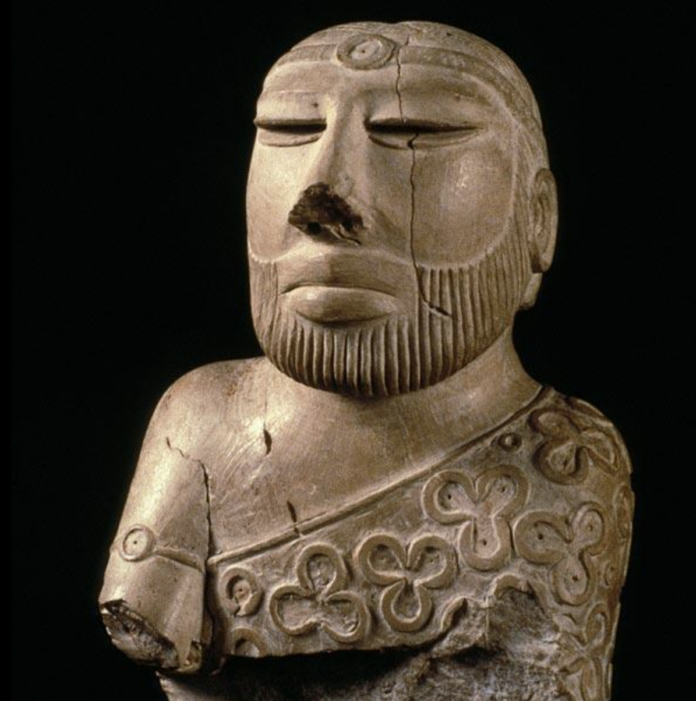MOHENJO DARO: Police on Sunday lodged a first information report (FIR) against unknown persons who tried to dishonour the statue of Priest King at a site of Mohenjo Daro – one of the largest settlements of ancient Indus Valley Civilisation.
The case was registered by Airport Police Station in Mohenjo Daro on the complaint of the watchman of the archaeological site.
“The case has been registered under Section 295-A which deals with deliberate and malicious acts intended to outrage religious feelings of any class by insulting its religion or religious beliefs,” a duty officer at the police station said.
He said that efforts are underway to trace the people who are involved in this cheap act.
The case was registered following a photo that went viral on social media in which three visitors were spotted dishonouring the statue of Priest King, an iconic representation of Indus civilisation that is placed at the entrance of the site.
There was an outcry on social media including Twitter, Facebook and Instagram and people belonging to different walks of life condemned the act demanding action against the culprits.
“We live in a civilised society and it’s insane to disgrace the icon of a civilisation. We should be proud of it,” said a rights activist, adding that strict action must be taken against people involved in it.
Soon after the incident, many people in Sindh replaced their profile pictures on Facebook and Twitter with Mohenjo Daro or Priest King’s photo for showing sympathy.
In 1927, a seated male soapstone figure was found in a building with unusually ornamental brickwork and a wall-niche. Though there is no evidence that priests or monarchs ruled Mohenjo Daro, archaeologists dubbed this figure a “Priest-King”. The sculpture shows a neatly bearded man with pierced earlobes and a fillet around his head, possibly all that is left of a once-elaborate hairstyle or head-dress; his hair is combed back. He wears an armband, and a cloak with drilled trefoil, single circle and double circle motifs, which show traces of red. His eyes might have originally been inlaid.
Case lodged for dishonouring Priest King statue at Mohenjo Daro

Must Read
Author riding the wave of love for Gujrat feted
GUJRAT: A notable author who pulls the heartstrings of people with his works expressing his love and devotion for the soil and its people...






















